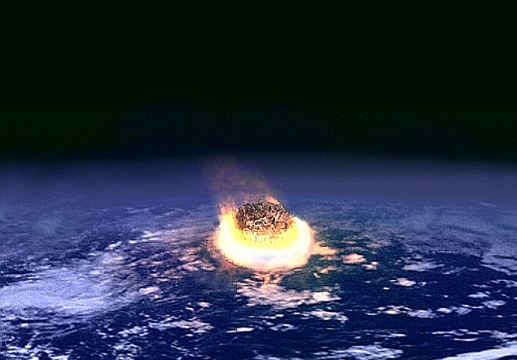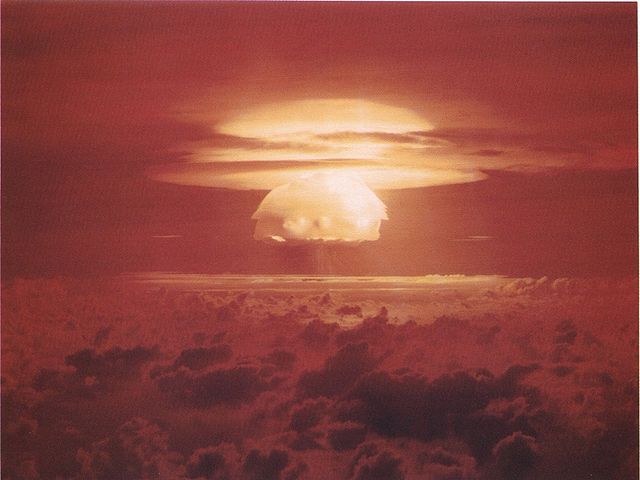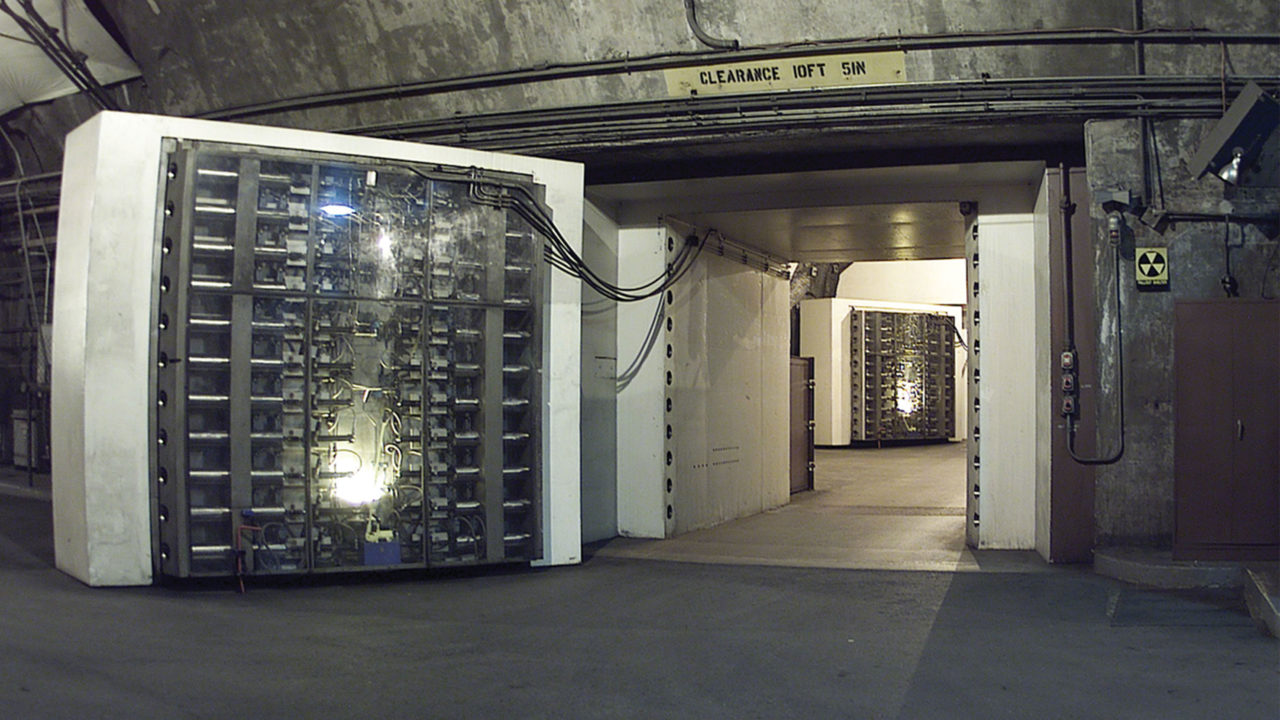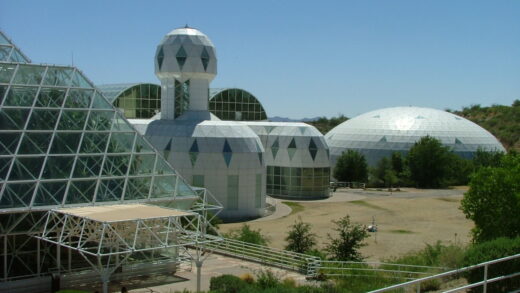A while ago I was playing through Fallout 4 and happened to re-watch Deep Impact at around the same time, and it got me thinking about the feasibility and logistics of constructing large-scale, long-term habitation for people underground. Some of you will recognise the title as being the slogan used by the Vault-Tec Corporation of the Fallout series for the Vaults.
The same general principles apply to both the Fallout Vaults and the Ark complex from Deep Impact, but they are somewhat different in scale, with the vaults of Fallout intended to house around 1000 people each whereas the caverns constructed by the US government in Deep Impact are intended to house 1 million people, albeit that this isn’t necessarily a single massive complex. As such I think it makes sense to start with the Vaults.
Fallout Vaults
Now, it is worth noting that in the lore of the Fallout universe the majority of the Vaults weren’t actually intended to provide a shelter in which the inhabitants could wait out the nuclear holocaust, but were in fact designed around a series of bizarre and extremely unethical social experiments. These social experiments mostly seemed to consist of ‘what happens if we create a society that is extremely unbalanced in some way or in which we have added something highly detrimental or subtracted essential?’ Unsurprisingly the near universal outcome of these experiments was that the inhabitants went insane and killed each other (in either order). I am going to intentionally ignore those and focus on the smaller number of Vaults that were actually intended as shelters from which their inhabitants could later emerge to re-settle the surface.
Imagining an isolated long-term habitat for around 1000 people is within reach of familiar things from the real world today, since we have submarines with complements of around 150 that can remain submerged for 6 months – limited only by their on-board food supplies.

Flattened trees around site of Tunguska event. Leonid Kulik, 1927 
Artist’s impression of a large asteroid impact. NASA 
Mushroom cloud of the Castle Bravo weapon test. US Department of Energy
Asteroid impacts and nuclear weapons, both guaranteed to ruin your day
What does a Vault need?
Submarines are not completely closed systems, sea water is taken in regularly where it is then distilled to produce drinking water and electrolysed to produce oxygen. Scrubbers remove carbon dioxide from the atmosphere and wastewater is expelled into the ocean. A semi-closed system like that of a submarine is rather different from a completely closed system like Biosphere 2, and a lot simpler and easier to maintain, but I think it is a reasonable model for the Vaults. Filtration systems would of course be needed to remove any radioactive particles from inflowing water, but that is perfectly feasible and is actually how the in-game lore states that the water system of a Vault works. Indeed, this is central to the plot of the first Fallout game. Unlike a submarine which is limited by being underwater a Vault could also have a similar system for air, having direct air intakes (with filtration) and outlets for maintaining a breathable atmosphere rather than the oxygen generators and carbon dioxide scrubbers a submarine works with. A Vault might well have a system like that of a submarine as a backup though since an air intake is more likely to be damaged by a missile strike than a water intake that could be drawing from an underground river. I couldn’t find anything in the game lore, but I think it’s reasonable to assume the atmospheric system works this way.
Provided that the intakes and filtration systems aren’t damaged, and that the nuclear reactor powering the Vault continues to function, the Vault should then have an effectively unlimited water and air. Reactors on submarines can go for over 25 years without being re-fuelled and it would certainly be possible to design a reactor to be able to last for longer than that, it would just need to be larger and produce more excess power initially. The one remaining problem we need to resolve then is food (strictly also waste management, but a lot of that will go into making fertiliser).
Growing food underground
The Vaults remained closed for a considerable amount of time. In the lore of the game Vault 8 re-opened in 2091, 14 years after the war, while Vault 76 opened in 2102, 25 years after the war. At the most extreme Vault 101 was intended to be a fully closed society, never re-emerging, and did remain effectively sealed until 2241, well over a century after the war. Even for a 10-year period I think it would be far more effective for the Vaults to grow their own food rather than try to rely on stored goods.
Being underground the Vault clearly can’t rely on natural light, so I looked into hydroponics and vertical farming. Rather nicely my old home, Canada, has some good examples to look at, there are quite a few remote communities in northern Canada (and also Alaska) where it is essentially impossible to grow food outside in the normal way, and where it is also difficult to ship fresh food in because of the remoteness. As a result there have been some enterprising initiatives using hydroponics systems in insulated shipping containers. The information I found suggested these containerised farms can achieve pretty impressive yields, producing something like 100 kg (220 lbs) of lettuce each week inside a standard shipping container (12.2×2.44×2.59 m). From what I can find yields for potatoes, tomatoes and carrots (amongst others) are pretty similar to lettuce in the field, but potatoes and tomatoes certainly require more vertical space than a lettuce, so I’ll make the assumption that on average the crop yield for a diversified containerised farm is about 50 kg/week of produce.
I’m going to presume that the Vault dwellers are vegetarian for efficiency purposes, but we could probably have some chickens if we want. So then how many people would the 50 kg/week from our container farm feed? Taking my own food consumption as a rough guide I’d estimate I eat about 1 kg/day, however I am not a vegetarian and a purely vegetarian diet has a lower calorie content per kilogram. I’ve also been told that I don’t eat very much. As such I’ll assume that our Vault dwellers eat more like 1.5-2 kg/day. The 50 kg/week from our farm works out to about 7 kg/day, so 1 container farm should be able to support about 4 people. To support 1000 people then we would need about 250 containers. One would also need some extra space for logistics, getting new trays of plants ready, cutting up plants being harvested, etc, so let’s assume that would increase the space requirement by 10% to 275 containers. Laid out as a single layer of containers that would cover an area of around 8200 square metres or 88000 square feet (also 0.82 hectares or 2 acres for those more used to farming areas).
Size of the Vault
The last point on how much space the farms would take up brings us on to the next topic, which is how much space our Vault needs. Somewhat ironically considering the hyper-capitalist society in which Vault-Tec developed the Vaults operate a bit like a commune. There is a communal cafeteria where everyone eats together, so the housing is more like dormitories than individual apartments and I’m going to say that a typical unit for a 4-person family is about 40 square metres (2 bedrooms, a common room and a bathroom), which I’ll increase to 50 to account for corridors. For 1000 people then the residential wing would be about 12,500 square metres, about 1.5 times as large as the farming/hydroponics wing. I think there would want to be a central space where all of the residents could be gathered in one place for events, like an old village hall, which could also double as the dining area. Allowing about 1.5 square metres per person (which is a rough calculation I found for restaurants) that would mean we would want the event space to be about 1500 square metres. There are then going to be kitchens, classrooms, workshops, an infirmary, storerooms, a gym, offices, etc. How much space that would all take up I’m really not sure, but as a rough estimate I’m going to guess about half as much space as the living quarters, so about 6,000 square metres.
Since we are underground what we really care about more than floor area is the volume. Conveniently the 2.59 m height of a standard shipping container is also a good ceiling height for the living areas so I will just assume they are the same and then increase the total to 3 m to account for ducts or wiring under the floor or above the ceiling. In total then the farming and residential areas come to about 85,000 cubic metres.
Finally, there is the support apparatus of the Vault, the nuclear reactor, the water and air filtration systems, sewage treatment, etc. Looking at cross-sections of nuclear submarines the reactor compartment doesn’t seem to take up that large a fraction of the hull space, likewise the water filtration and air scrubbers. I left these until last since they are more volumes rather than floor areas. Based on looking at submarines I am going to assume that we want another 10,000 cubic metres to house these facilities. Rounding up for convenience that brings our total to around 100,000 cubic metres.
How does that 100,000 cubic metres compare with some other underground structures? The most obvious direct comparison (and what I suspect the concept of the Vaults are based on) is the Cheyenne Mountain Complex in the US, which just like the Vaults was built to withstand a nuclear attack. Size-wise the main tunnels of the Cheyenne Mountain Complex total about 200,000 cubic metres along with additional space in support and access tunnels so overall it is probably about two and half times the size we estimated for a Vault. That suggests to me that the 100,000 cubic metre estimate for a Vault is pretty good. As a comparable facility Cheyenne Mountain also conveniently provides us with an estimate for how much constructing a Vault might cost. In 2018 dollars Cheyenne Mountain cost about $1 billion to build. Since the Vault has a nuclear reactor rather than diesel generators, which is more expensive, I think it’s reasonable to guess that a Vault might cost about $1 billion too. The lore for the first Fallout game does contain a reference to Vault 13 costing $645 billion (overrunning from an original budget of $400 billion), but unless the US in the Fallout universe has experienced at least one period of very high inflation that seems rather off.
Deep Impact Caverns
In principle we could just take the calculations for the Vault and multiply it by 1000 to get the Ark caverns for Deep Impact, but there are some important differences. Firstly, the Ark caverns were only intended to house people for 2 years, not over 10 years. For that time span it is probably easier to rely on stored food than worry about the logistics of setting up farms, though there might be some farming to make up shortfalls in specific nutrients. For that shorter time it would also be more reasonable to ask people to put up with more confined living quarters. Moreover, although it might take two years for enough of the ash to rain out of the atmosphere for plants to begin photosynthesising properly again, that doesn’t mean that the people in the shelter need to stay inside for 2 years. The people only need to stay inside long enough for the worst of the ash and debris falls to subside so that tents, buildings, etc don’t get buried under ash. The same would also apply to the Vaults, people would only need to stay underground while the bombs were actually falling, and maybe a few days to a few weeks afterwards at most. After that initial period they could erect tents and pre-fabricated structures on the surface. Even if the people didn’t really want to be on the surface they could certainly put up greenhouses and run the farms up there. In the case of the Vaults though I decided to stick with the times in the Fallout lore.
Overall then I think that the Ark caverns would only need to be about the size of 500 Vaults (about 50 million cubic metres), maybe even less. The film also, wisely, chose to use the limestone caves of Missouri as the basis for the Ark complex, reducing the amount of excavation required as some of the caves are already very large, the Cathedral Room of the Marvel Cave for example is over 500,000 cubic metres by itself. In terms of costs we might expect the construction of the Ark caverns to cost around $500 billion, which is a lot, but spread over several years would only require perhaps a third of the present US military budget of nearly $700 billion to be diverted. That would probably be enough to fall under President Beck’s description of ‘too much to hide’ but still wouldn’t represent a major financial issue to the US government.
Nonetheless there is a major issue that is different for the Ark caverns than for the Vaults, and that is that an asteroid impact is orders of magnitude more devastating than a nuclear war. Today the US and Russia both have around 1500 nuclear warheads, but in the far more tense times prior to the war in Fallout the number of warheads around could be much higher. Assuming that all of the warheads get launched that could be a combined yield of 100,000 megatons or more. By comparison the asteroid in the film is about the same size as the one that wiped out the dinosaurs and that impact was a 100 million megaton event. The kilometre-high tsunamis described by the film are a bit of an exaggeration, but nonetheless this is still far more devastating than any nuclear war could ever be.
Taking the impact of the larger Wolf fragment as being analogous to the Chicxulub impact and locating the impact site in western Canada as stated in the film the Ark caverns in Missouri roughly 4000 km away would be in the region that is likely to experience gale- to hurricane-force winds, causing severe damage to trees and structures. This could potentially be a problem for the air intakes of the caverns, as could the multiple metres debris that is likely to rain down. Alongside the blast wave in the air there is also a blast wave in the ground, something comparable to a magnitude 10 earthquake. The magnitude scale for earthquakes is logarithmic in wave amplitude and the seismic energy (which is equal to amplitude1.5) will drop off roughly as the square of distance from the centre, so that would be similar to a magnitude 7.3 earthquake with an epicentre 40 km away. That is a major earthquake so the caverns would need to be constructed with earthquake resistance in mind. As well as thinking about the internal structures of the caverns this would also mean looking at and reinforcing natural faults in the rock. This is probably going to make construction of the Ark caverns several times as expensive, starting to become a major financial outlay for the US government.
It is also worth noting that the final sacrifice of the crew of the Messiah in the film to destroy the Wolf fragment wouldn’t actually have helped, because the rain of fragments through the atmosphere would produce enormous flash heating at the surface as they burnt up, causing massive forest fires all over North America. Shortly after witnessing that rather spectacular display of meteors Elijah Wood would thus probably have burnt to death, though that would have been a bit of a downer ending to the film.
References
- Fallout wiki: https://fallout.fandom.com/wiki/Fallout_Wiki
- Effects of Chicxulub impact: https://www.lpi.usra.edu/science/kring/Chicxulub/regional-effects/
- Hydroponic produce in Manitoba: https://www.cbc.ca/news/canada/manitoba/churchill-hydroponic-produce-1.4568847
- Cheyenne Mountain Complex: https://en.wikipedia.org/wiki/Cheyenne_Mountain_Complex
- Marvel Cave: https://en.wikipedia.org/wiki/Marvel_Cave
Addendum
After writing this I discovered that along with the many natural caves in Missouri there is an existing man-made cavern that would make a good piece of the Ark caverns, the Atchison Storage Facility. This is an old underground limestone mine that was subsequently used as a storage site by the US military until it was sold off in 2013. It is enormous, over 250,000 square metres, and is a room-and-pillar style mine with the floor mostly on one level and the high ceilings held up by many huge pillars, making it look a bit like the mines of Moria. In rather an ironic turn, at least for this blog post, a large chunk of it was bought by the Vivos Group, a company that actually specialises in building underground bunkers. Apparently they later abandoned the project because of concerns about the geological stability, a point that I noted above, but in constructing the Ark caverns it might be more time efficient to shore up any instabilities in Atchison that dig out a new cavern.
- Room and pillar mining: https://en.wikipedia.org/wiki/Room_and_pillar_mining

